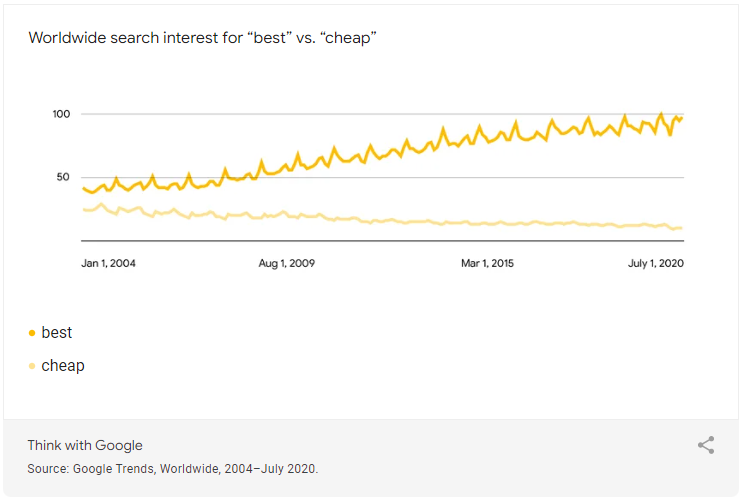In the ever-evolving world of consumer behaviour, understanding how people make purchasing decisions is becoming increasingly complex. Alistair Rennie and Jonny Protheroe, part of Google’s consumer insights team, dedicate their days to exploring these changes and shedding light on the buyer decision process. In their latest research, they delve into the enigmatic realm known as the “messy middle” and how it influences what people ultimately choose to buy.
The Non-Linear Path to Purchase
The journey from trigger to purchase is far from a straight line. In the messy middle, there is a web of touchpoints unique to each individual that complicates the decision-making process. What remains unclear, however, is how shoppers navigate through the vast amount of information and choices they encounter along the way. This research aims to shed light on this process and understand how it shapes consumer buying behaviour.
The Transformative Power of the Internet
As the internet has evolved, it has morphed from a simple tool for price comparison into a vast platform for comparing every aspect of a product or service. This transformation is evident in how purchase behaviour has changed on Google Search over the years. Search interest in terms like “best” has surpassed that of “cheap” worldwide.
This trend holds true in countries like Germany, India, and Italy, even when these terms are translated into local languages.
The Meaning of “Cheap” and “Best”
While the precise definition of “cheap” may vary between individuals, it generally carries a singular meaning. On the other hand, “best” encompasses a wide range of interpretations, including value, quality, performance, or popularity. This disparity in meaning becomes evident during the “messy middle” of the decision-making process, where consumers actively seek information and evaluate options.
Applying behavioural Science Principles
To gain a deeper understanding of consumer decision-making, Google partnered with behavioural science experts, The Behavioural Architects. Through a series of literary reviews, shopping observation studies, search trend analyses, and a large-scale experiment, they explored how consumers make decisions in an environment filled with abundant choices and limitless information. Their focus was to understand how cognitive biases, deeply embedded in human psychology, influence purchase decisions in the online realm.
The Mental Modes of the Messy Middle
Through their research, a new decision-making model emerged, placing the messy middle at its core. This complex space between triggers and purchases is where customers are won or lost. Two distinct mental modes define the messy middle: exploration and evaluation. Customers traverse these modes repeatedly, relying on various online sources such as search engines, social media, aggregators, and review websites.
Cognitive Biases at Play
As customers explore and evaluate options in the messy middle, cognitive biases shape their shopping behavior and influence their product choices. While countless biases exist, the research prioritized six key biases:
- Category heuristics: Simplifying purchase decisions through concise product specifications.
- Power of now: The proposition weakens the longer customers have to wait for a product.
- Social proof: Recommendations and reviews from others hold significant persuasive power.
- Scarcity bias: As product availability decreases, its desirability increases.
- Authority bias: Customers are swayed by trusted experts or sources.
- Power of free: The inclusion of a free gift, even if unrelated, motivates customers.
The Shopping Experiment
To test the impact of these biases, a large-scale shopping experiment was conducted.
Real in-market shoppers simulated 310,000 purchase scenarios across various industries. The experiment included established brands, challenger brands, and even a fictional brand to assess the biases’ influence on customer preferences.
The results demonstrated that applying behavioural science principles intelligently and responsibly could significantly impact consumer preferences. Even the fictional brand, when “supercharged” with benefits aligned with the biases, managed to win a considerable share of shopper preference from the established favorite.
The experiment revealed the power of these biases in shaping purchase decisions.
Succeeding in the Messy Middle
While the messy middle may seem complex, it is important to remember that for consumers, it is just a normal part of the shopping experience.
The goal is not to force customers out of this loop but to provide them with the information and reassurance they need to make informed decisions. Whether you’re a well-established category giant or a challenger brand, the approach remains the same:
- Establish Brand Presence: Ensure your product or service is strategically front of mind as customers explore their options.
- Make your brand visible and accessible across relevant touchpoints
- Make your brand visible and accessible across relevant touchpoints
- Apply Behavioural Science Principles: Intelligently and responsibly employ the cognitive biases discussed earlier to make your proposition compelling.
- Leverage category heuristics
- Create a sense of urgency
- Showcase social proof
- Emphasize scarcity
- Establish authority
- Consider the power of free
- Bridge the Gap: Reduce the time customers spend exposed to competitor brands by closing the gap between trigger and purchase.
- Streamline the path to conversion
- Provide clear information
- Offer a seamless user experience
- Build Collaborative Teams: Foster cross-functional collaboration within your organization.
- Break down silos between branding and performance teams to ensure a cohesive approach in the messy middle
In Conclusion
The messy middle of the buyer decision process is a complex and ever-evolving space. However, by understanding and leveraging the cognitive biases that influence purchase decisions, brands can navigate this terrain with confidence.
Embrace the power of behavioural science principles and create a seamless shopping experience for your customers.
For a more comprehensive understanding of the messy middle, the behavioural science principles explored, and actionable recommendations for applying them to your brand, download the full report. Discover how you can unlock the potential of the messy middle and gain a competitive edge in the dynamic world of consumer decision-making.
Unlock the Power of Google Ads with the Help of an Experienced Google Ads Agency
Are you worried about quality of your Google Ad campaigns? Is your current Google Ads agency not supporting you in this area?
As a Google Ads agency in Southampton, Hampshire, we are positioned perfectly to help business owners, MDs and sales/marketing managers with their Google Ads. Get started today with our free Google Ads Growth Review!
- How to Do Keyword Research for Google Ads - January 15, 2024
- A Comprehensive Guide to Google Ads for B2C Businesses - January 8, 2024
- How to Write Calls to Action (CTAs) for Google Ads - December 25, 2023








